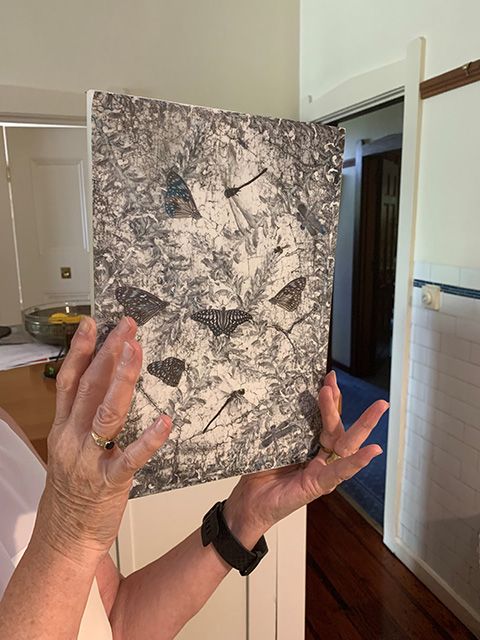Printing to a Tile Waiting to be Made

Works by photographers Colin and Pam Morris have been showcased on the AnArt4Life blog before and we are always enthralled by the images they produce.
Above is an exquisite photograph by Pam titled Channelling William Morris which was a semi-finalist in the AIPP2 Silver Lining Awards for 2020.
Today Colin is going to explain how he turned one of Pam's award winning images into a tile.


When I saw my wife Pam's composite3 photo "Channelling William Morris", for which she won an award, it was for me a "Tile waiting to be made".
This was about a year ago. I investigated ways to turn an image into a tile and discovered the best approach was to print it as an old fashion water transfer.
Problem - with an inkjet printer you have to look at the waterproof properties of the print. Ink is water soluble so it will smudge. laser printing uses a powder that transfers the image to the paper which is then heat bonded to the paper.
With all "the lock downs" (we live in Melbourne) it all got a little too hard until a couple of months ago and I investigated how to do it again.
I found a supplier of film free transfer paper which was laser printer compatible negating the problem of being water soluble ink. The paper is coated which enhances the image and consequently the surface of the tile.
I bought the paper, printed the image in reverse and adjusted the colours a little due to using a laser printer.
I had a 12 mil off cut of Corian bench top material4 which I cut to size to be the backing board. Then I soaked the image in water and placed it face down on the Corian board, pealed the paper backing off and squeegeed the image flat which then sticks to the board as in the same process as an old fashioned transfer.
I thoroughly dried "the tile" with a hot air gun and baked it in the oven for 10 minutes as per the instructions at about 150 degrees. Finally the plastic backing paper is peeled off leaving the image behind. Be careful to choose a backing material that will take the heat.

I was so impressed I now have some other projects I wish to also turn to. I am thinking of placing the image on a mirror, glass or metal backing though I will nedd to check the heat resistance of these backing materials.
In the meantime, we can sit back and admire the tile of Channelling William Morris hanging on the wall.

A very special thank you to Colin Morris for providing the explanation used in this post and for the images
© Thank you also to Pam Morris who kindly gave permission for the images of her work to be shared on AnArt4Life.
You might like to take a tour of our photography posts by visiting our TagCloud feature - to see previouse posts on photography please click here.
You can also check out some posts showcasing works by Colin Morris by following these bookmark links.


And works by Pam Morris can be seen in the bookmarks as given below.


Footnotes
1. Spectral Modes Photography
2. Australian Institute of Professional Photography
3. A composite image is an image created from multiple images
4. Corian is a brand of solid surface material used for benchtops

